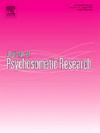Bodily pain severity and emotional pain experience in old age: Analyses of potential mediators from representative Ghanaian aging survey
IF 3.5
2区 医学
Q2 PSYCHIATRY
引用次数: 0
Abstract
Objectives
Data on the association between pain and emotional health outcomes in old age primarily come from high-income samples. This study examines the cross-sectional association of bodily pain with emotional pain in a representative sample from Ghana, a lower-middle-income sub-Saharan African country. The study also investigates the potential mediators in the association.
Methods
Participants (N = 1201) from the Aging, Health, Psychological Well-being, and Health-seeking Behavior Study reported their experiences of bodily pain and emotional pain. Pain severity was assessed over the last 30 days using a cross-culturally validated item from the Medical Outcomes Study Short Form-36, while emotional pain was assessed with seven emotional distress items on a 4-level scale over the last 30 days. Multivariable logistic regressions and bootstrapping models assessed the hypothesized association.
Results
Mean (SD) age was 66.1 (11.9) years, and 63.3 % were women. Compared to no pain, mild (odds ratio (OR) = 2.05, 95 %CI = 1.31–3.22), moderate (OR = 2.83, 95 %CI = 1.80–4.45), and severe bodily pains (OR = 3.55, 95 %CI = 1.93–6.55) had higher odds for emotional pain. The associations were stronger among women (than men) and the≥65 age group (than the 50–64 age group). Functional limitations (47.1 %), physical activity (26.4 %), and sleep problems (22.2 %) significantly mediated the association.
Conclusions
The positive cross-sectional association between bodily pain and emotional pain generalizes to a sub-Saharan African country. Psychosomatic factors largely accounted for this association. Efforts to improve emotional health may consider pain and the mediators. More studies are needed in low- and middle-income countries to gauge generalizability fully.
老年身体疼痛严重程度和情感疼痛体验:来自加纳代表性老龄化调查的潜在中介分析
目标 有关老年疼痛与情绪健康结果之间关系的数据主要来自高收入样本。本研究以加纳(撒哈拉以南非洲地区的一个中低收入国家)的代表性样本为研究对象,探讨了身体疼痛与情感疼痛之间的横断面关联。方法 "老龄化、健康、心理健康和寻求健康行为研究"(Aging, Health, Psychological Well-being, and Health-seeking Behavior Study)的参与者(N = 1201)报告了他们身体疼痛和情感疼痛的经历。过去 30 天内的疼痛严重程度是通过医学结果研究短表-36 中的一个跨文化验证项目进行评估的,而情感疼痛则是通过过去 30 天内的 7 个情感困扰项目进行评估的。多变量逻辑回归和引导模型对假设的关联进行了评估。结果 平均(标清)年龄为 66.1 (11.9)岁,63.3% 为女性。与无疼痛相比,轻度(比值比 (OR) = 2.05,95 %CI = 1.31-3.22)、中度(比值比 = 2.83,95 %CI = 1.80-4.45)和重度身体疼痛(比值比 = 3.55,95 %CI = 1.93-6.55)情绪疼痛的几率更高。女性(比男性)和≥65 岁年龄组(比 50-64 岁年龄组)的相关性更强。功能限制(47.1%)、体力活动(26.4%)和睡眠问题(22.2%)在很大程度上调节了这种关联。身心因素在很大程度上导致了这种关联。改善情绪健康的工作可以考虑疼痛及其中介因素。需要在中低收入国家开展更多的研究,以充分评估其普遍性。
本文章由计算机程序翻译,如有差异,请以英文原文为准。
求助全文
约1分钟内获得全文
求助全文
来源期刊
CiteScore
7.40
自引率
6.40%
发文量
314
审稿时长
6.2 weeks
期刊介绍:
The Journal of Psychosomatic Research is a multidisciplinary research journal covering all aspects of the relationships between psychology and medicine. The scope is broad and ranges from basic human biological and psychological research to evaluations of treatment and services. Papers will normally be concerned with illness or patients rather than studies of healthy populations. Studies concerning special populations, such as the elderly and children and adolescents, are welcome. In addition to peer-reviewed original papers, the journal publishes editorials, reviews, and other papers related to the journal''s aims.

 求助内容:
求助内容: 应助结果提醒方式:
应助结果提醒方式:


